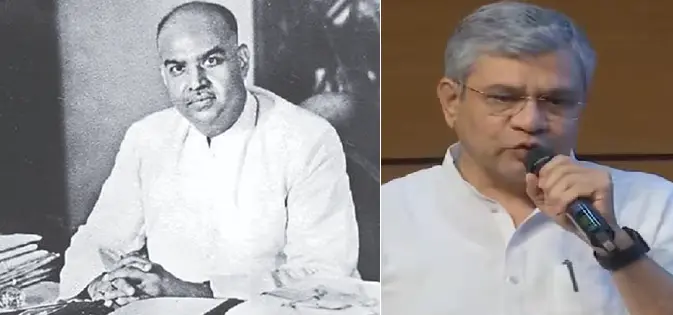
On Syama Prasad Mookerjee’s birth anniversary, Union Minister Ashwini Vaishnaw declared the abrogation of Article 370 as the culmination of Mookerjee’s lifelong struggle
A Struggle Completed: Mookerjee’s Vision and Article 370
At a commemorative event in Delhi, Union Minister Ashwini Vaishnaw paid homage to Syama Prasad Mookerjee, the founder of the Bharatiya Jana Sangh, declaring that his ideological battle reached its conclusion in 2019, when Article 370 was abrogated from the Indian Constitution.
Table of Contents
“It is because of Dr Syama Prasad Mookerjee’s ideas and struggles that such great achievements have been possible, achievements crucial for India’s unity and for our ideological oneness as a nation,” Vaishnaw stated.
Mookerjee, who died under controversial circumstances in 1953 while protesting Jammu and Kashmir’s special status, had long opposed Article 370, viewing it as a barrier to national integration. His slogan, “Ek desh mein do vidhan, do pradhan, aur do nishan nahi chalenge” (One country cannot have two constitutions, two prime ministers, and two flags), became a rallying cry for generations of nationalists.
Vaishnaw’s remarks framed the 2019 constitutional change not merely as a political decision but as the culmination of a decades-long ideological movement, rooted in Mookerjee’s vision of a united India.
From Education to Empowerment: Mookerjee’s Enduring Influence
Beyond politics, Vaishnaw highlighted Mookerjee’s role as an educationist and cultural reformer, particularly his advocacy for Indian languages during his tenure as Vice Chancellor of Calcutta University.
“He advocated for Indian languages at a time when British rule was coming to an end, and English was considered to be the most significant language,” Vaishnaw noted.
This legacy, Vaishnaw emphasized, is now reflected in the New Education Policy (NEP), which promotes mother-tongue instruction, regional language empowerment, and inclusive learning. Mookerjee’s belief in linguistic pride and cultural identity has found renewed relevance in today’s educational reforms.
His contributions to industrial development, establishing institutions like Hindustan Aircraft Factory and Chittaranjan Locomotive Works, also underscore his commitment to nation-building through self-reliance.
The tribute served as a reminder that Mookerjee’s legacy spans education, industry, and ideology, making him a multifaceted architect of modern India.
Linking Past to Present: Infrastructure, Ideology, and Governance
Vaishnaw’s speech also touched on contemporary governance, urging Members of Parliament to inspect and improve railway stations in their constituencies. He revealed that Delhi’s railway budget has increased tenfold under Prime Minister Modi, with master plans underway for Shakur Basti and Azadpur stations.
This infrastructural push was framed as part of a broader mission to honour Mookerjee’s vision, not just through symbolic gestures but through tangible development. The minister’s call to action emphasized collaborative governance, echoing Mookerjee’s belief in grassroots engagement and institutional accountability.
The event, attended by BJP leaders including Delhi CM Rekha Gupta and Delhi BJP President Virendraa Sachdeva, was not just a tribute but a political reaffirmation of Mookerjee’s ideals in today’s policy landscape.
Conclusion:
Ashwini Vaishnaw’s tribute to Syama Prasad Mookerjee was more than ceremonial, it was a strategic invocation of legacy to validate contemporary reforms. By linking the abrogation of Article 370, the New Education Policy, and infrastructure modernization to Mookerjee’s vision, the speech positioned him as a timeless architect of India’s unity and progress. As the nation reflects on its ideological roots, Mookerjee’s legacy continues to shape its future.
Stay updated with the latest news on Rapido Updates. Keep yourself updated with The World, India News, Entertainment, Market, Automobile, Gadgets, Sports, and many more